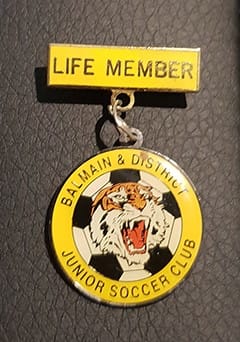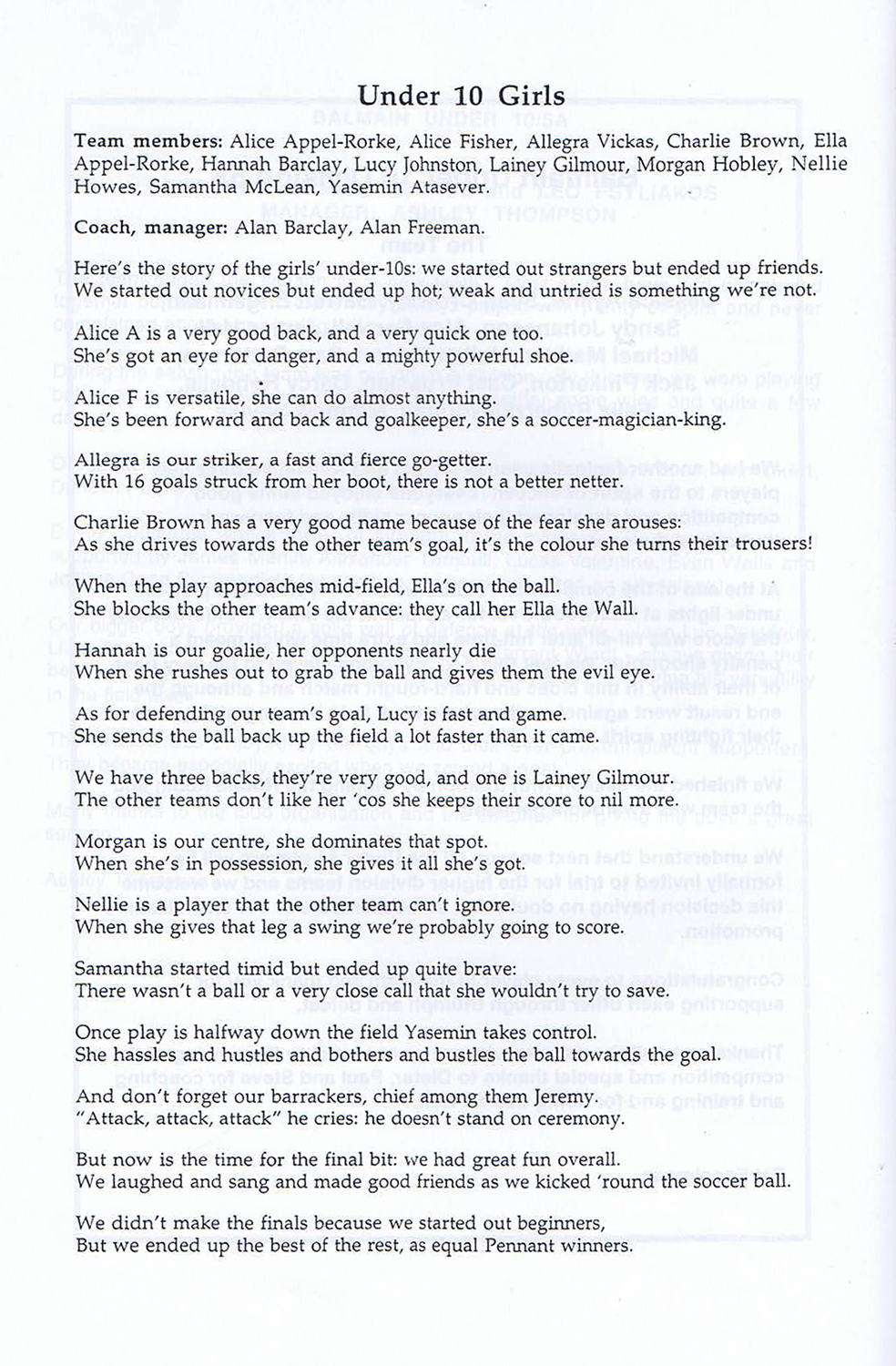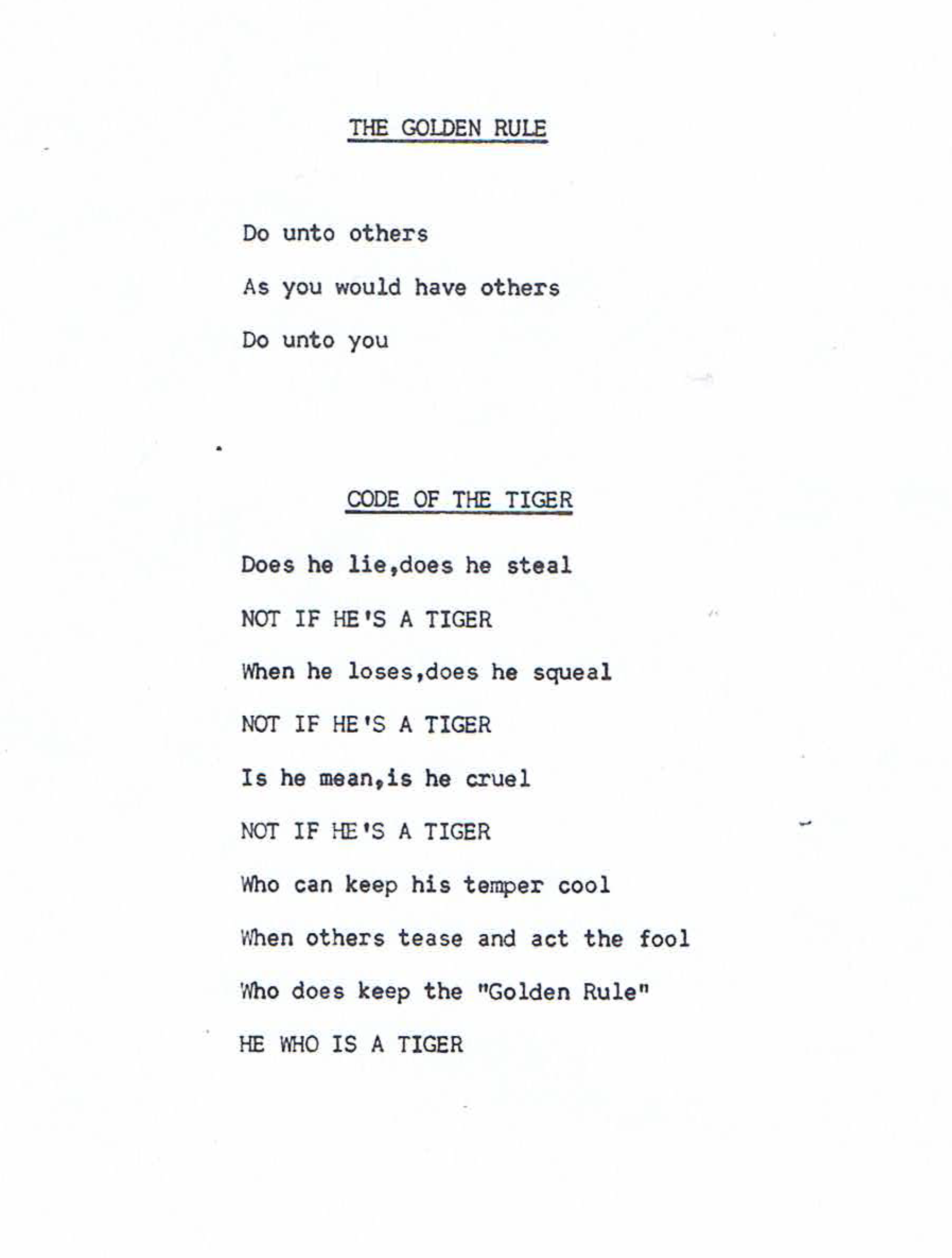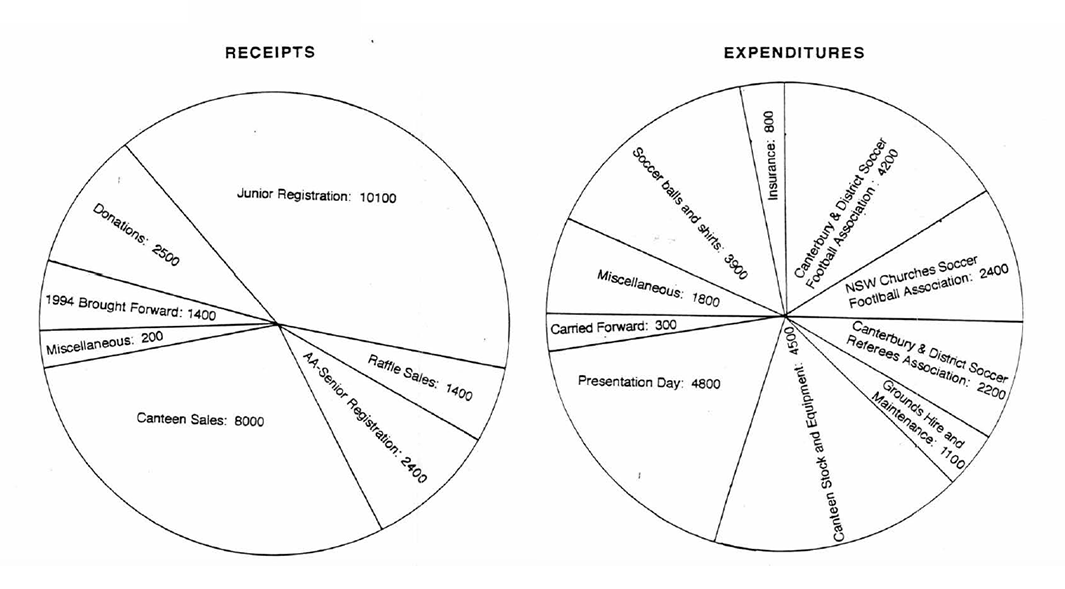Nineties
THE CLUB GAINS INDEPENDENCE AND GROWS UP
After 23 years, the “soccer section” at last broke away from the umbrella of the Balmain Police Citizens Youth Club. Changes in the BPCYC federation policies in the early 1990s had impacted the control of the club’s financial assets, and in the eyes of the club, there was no guarantee it could get access to its own funds. (Read the 1990 BPCYC Constitution here.)
‘Although fully autonomous, we have channelled all funds that we have collected back through the Youth Club and obtained approval and subsequent payment of bills from the Youth Club,’ President Bill Luck wrote to members in 1993. ‘Over the past couple of seasons, changes in the Youth Club’s Federation’s Policy has resulted in a much tighter control of available funds to the point where we are no longer guaranteed that the money paid in by the Soccer Section will be readily available to meet the demands of what has become a large organisation (28 teams) in its own right.’
Bills were being paid up to two months late. The executive found themselves as the mercy of the Youth Club for as simple a purchase as a replacement of a ball. The situation was untenable – and even the Youth Club acknowledged it, supporting the soccer section’s branching out.
So, under the ever-capable stewardship of Treasurer Alan Kennedy, 1994 was our independence year. The club broke away and became the Balmain & District Junior Soccer Club.
By 1999, the club had too many senior teams for that name to pass muster. The “junior” was dropped, and we became the Balmain & District Soccer Club under Club President Fred Tagoe.
By this time, we were at a record 46 teams, made up of 10 senior teams, 16 junior teams, 15 mini teams and 3 girls teams. This made us the biggest club in the Canterbury District.
ALL GIRLS, SOME GLORY
Girls had been part of the club’s mix since the eighties, adding some femme fire to junior teams made up mostly of boys. But it wasn’t until 1998 that a “girls only” team formed – the U12 Girls team. Debuting in the Gladesville Hornsby Women’s Soccer competition, they were led by coach George Savidis and Manager Jeanette Holloway. They were, by the end of the year, in the ‘rough shape of a soccer team,’ said Jeanette.
The next year under coach John Morgan (who confessed he had ‘no idea what was in store when I rashly raised my hand’) the girls ‘learnt the joy of winning, and the darkness of defeat.’ They won four games and drew one, which ‘might not sound very grand, but it was four wins and one draw up on last season,’ said Morgan. 1999 also saw the creation of the second all-girls team, the U10s. Their season was commemorated with a poem – which is featured here to the left.
GOOD SPORTS
Despite our size, our Balmain “Tigers” continued to abide by the “Code of the Tiger”, which is all about keeping a cool head and good heart on and off the field. For our upstanding spirit, we were at the end of the decade Bestmixer handed the Sportsmanship Award, which goes to the club which has the best record for clean and fair play, based on the number of red and yellow cards given during the season. We’d continue to win this award in consecutive years, too.
Said Canterbury Secretary Dick McCabe: ‘Balmain is recognised by the rest of the Canterbury District as a good club to play against, as we always display good sportsmanship – win, lose or draw.’
As in previous decades, the club would have folded without the efforts of its many volunteers – at the canteen, as referees, coaches and linesman, and a host of other assorted tasks. Among the many is Alan Kennedy. A long-time club Treasurer, he became the inaugural “Club Legend”, going above and beyond his scope of duties and taking on all numbers of tasks, including coach and manager. His responsibilities compounded after the club became independent, as it meant getting the club incorporated and formulating a new constitution.
‘The club could not continue without him,’ wrote the 1998 Canterbury Secretary. ‘Who else would stock the canteens at 4.30am on a cold and dark Saturday morning, and still be able to laugh at himself when he discovered his alarm had gone off 3 hours early?’
‘He never seems to tire,’ confirmed Fred Tagoe. You can find our 2021 interview with Mr Kennedy here.
SWEET MOMENTS
After the chaos of the eighties and early nineties, the newly independent club was proudly coming into its own, diversifying more across ages and genders. There were also some sweet moments to be had. One of them is remembered here by 1999 U6 coach Warren Lee:
Is there a Balmain coach out there who would not be envious of an 11-1 drubbing of Marrickville? (Thank you boys.) Then there was the infamous “foot of God” incident. A Balmain corner lobbed all the way on the full to the goalmouth (a rare sigh in under 6) to be met, even more remarkably, with a full-blooded volley. It stunned everyone including the opposition coach who was ambling across the front of goal like a sacred cow. His unintentional clearance saved a certain goal, the best ever under 6 goal-that-never-was.
Another sweetener: a season’s supply of oranges from our then sponsor, Rozelle Fruit Shop.
FOLLOW THE MONEY
With independence came extra responsibility and heightened pressure to achieve solvency for the long-term stability of the club. Annual reports, made available to all members, were updated by the Treasurer to include detailed summaries of expenditure and receipts. For instance, see below the diagrams of where money came from and went in 1995 – a tough year for the club – as reported by then Treasurer Alan Kennedy. Registration fees and canteen proceeds were depended upon heavily, and the club was sometimes forced to use sponsorship and donation funds for everyday costs – ‘not the best practice,’ remarked Kennedy.
The club managed to secure a modest surplus before the turn of the century, despite an array of financial challenges and necessary expenditures – including increasing payments towards training fields, investments in new telecommunications technology, equipment upgrades and the burden of a dismaying if small number of members who failed to pay registrations fees.







